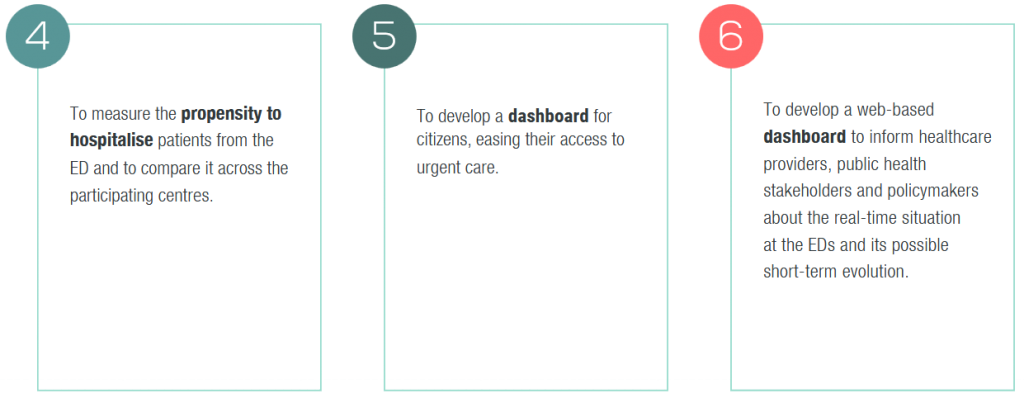Carrying out much-needed research in the emergency department is very difficult due to the high number of patients, lack of time in such an urgent care context, and the chronic shortage of staff. The only way to fill the gap between the need for clinical research and the availability of robust data in the ED is to directly extract such data from ED Electronic Health Records (EHRs), avoiding dedicated, time-consuming data collection. Achieving this goal would enable clinical research and allow clinical information to be used to address a multitude of research questions.
Obtaining consistent data from EHRs is a complex task, however. While part of the data registered in EHRs is structured (such as lab test results and vital parameters), most useful patient information is contained in free text form (e.g., descriptions of signs and symptoms, suspected and confirmed diagnoses, and anamnesis).


Such circumstances and needs require a Natural Language Processing (NLP) tool, which must be integrated in an advanced system able to exploit NLP functions and obtain highly reliable data. Accordingly, one of the main aims of eCREAM is to develop new technical solutions to extract clinical information from structured and unstructured data originating from different medical sources to create high-quality, highly structured, interoperable databases of clinical information on patients visiting the ED.
Moreover, since the proactive follow-up of ED patients is also unfeasible for the above reasons, relying on different, existing data sources is also necessary to measure patients’ outcomes at the most appropriate time interval for the research question of interest. eCREAM closely adheres to the Open Science paradigm and is fully committed to putting FAIR principles (i.e., making data Findable, Accessible, Interoperable, and Re-usable) into practice, advocating the importance of data as a public good. We will consider the different data access needs of various end-users: clinicians, researchers, health policymakers, and citizens. Thus, eCREAM will implement different methods to make data readily available and re-usable by different stakeholders.
Finally, even when a technical solution appears robust and sound, its practical validity can only be proven in the field. For this reason, eCREAM will address two use cases representing major issues in emergency care. This will enable the consortium to test the solution against real scenarios that may pose procedural and technical difficulties in the exploitation of data.
First, eCREAM will study the propensity of the ED to hospitalise patients. Second, eCREAM will exploit ED data to develop dashboards to inform healthcare staff and citizens in real-time about ED overcrowding and other characteristics, and policymakers about the possible emergence of specific epidemiological phenomena.

Project breakthrough
eCREAM will develop relevant lines of work with the following aims:


